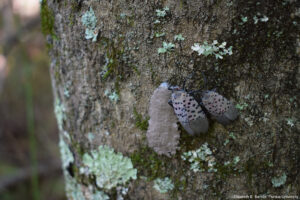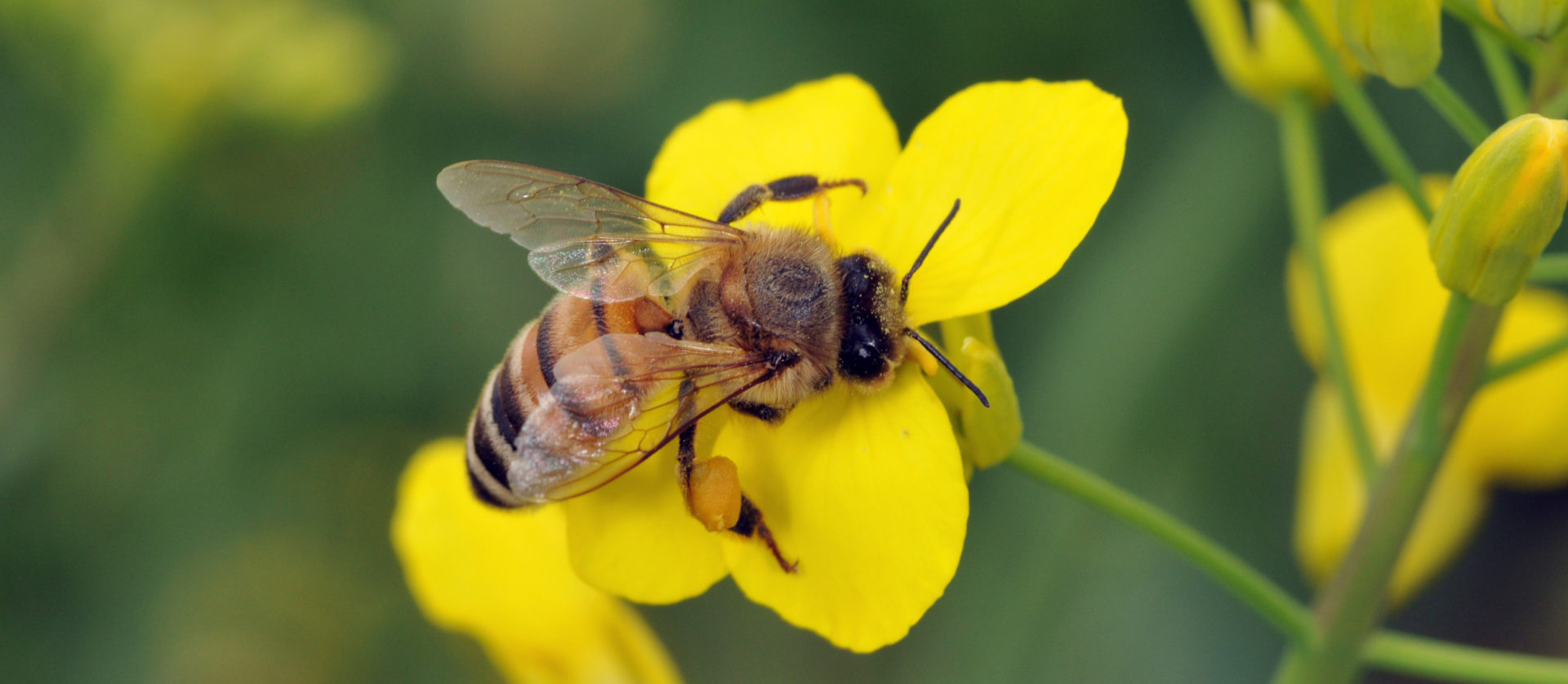Spotted lanternfly (Lycorma delicatula) was found in late July, 2022 in Huntington, Indiana. Spotted lanternfly (SLF) is a federally regulated invasive species and a serious new pest that harms plants by slowing their growth and reducing fruit production, especially in vineyards and orchards. Heavily infested trees can become coated with the sticky liquid excrement of SLF called honeydew. Over time, the honeydew becomes infested with a black unsightly sooty mold that slows plant growth and makes a mess of cars and picnic areas. This sugary liquid attracts many kinds of invertebrates but is especially attractive to honey bees who collect it and add it to their honey stores. While the honey is still functional to the colony, it can taste foul to consumers.

The recent discovery of SLF this far north of last year’s find along the Ohio River in Vevay, IN makes it possible for SLF to be anywhere in Indiana. Knowing where this pest is located can inform regulatory actions taken to slow its spread and reduce the harm it can cause. Once established, SLF tends to stick around. No state with invasive SLF has been able to eradicate them. Right now, the Indiana DNR is asking for all citizens to search for and report spotted lanternfly. The bright color of late-stage immatures and adults are easily recognized at this time of the year. Anyone who spots signs of the spotted lanternfly should contact the Indiana Division of Entomology and Plant Pathology (DEPP) by calling 866-NO EXOTIC (866-663-9684) or send an email (with a photo of the insect if possible) to DEPP@dnr.IN.gov. For more information about this or other invasive pests see the following link https://www.in.gov/dnr/entomology/pests-of-concern/spotted-lanternfly/
What is Spotted Lanternfly?
SLF is a planthopper that originated in Asia. It was first discovered in the United States in Pennsylvania in 2014. Its ability to lay eggs and hide in difficult-to-find places on structures and vehicles makes it easy to spread unknowingly by people. Both Indiana infestations are likely to have originated from this type of accidental spread.

Adult spotted lanternflies have two sets of wingsThe underwings have a very distinct red color, while the outer wings have distinct spots. The fourth instar of the insect is bright red with black and white markings. The egg masses of this invasive insect look like mud and they can be spread by vehicle transport including recreational vehicles, cargo carriers (truck transport) and freight trains. They can also be spread through trade materials sold in infested areas that are shipped out of state including nursery stock, outdoor furniture, lumber, etc. Beekeepers who are receiving goods from the east coast should inspect for signs of the insect, especially if it is to be kept outdoors.
Spotted lanternflies prefer to feed on tree of heaven (Ailanthus altissima) as adults, but they have been found to feed on more than 100 species of plants including walnut, oak, maple, and various fruit trees. This insect is often found on grapevines in vineyards. Adult insects can greatly weaken plants when feeding on them with their piercing, sucking mouthparts. Plants weakened by SLF may be unable to survive the winter months.
As a beekeeper, SLF matters to you:
Beekeepers should be prepared both for the early invasion of SLF and for its potential establishment in Indiana. Invasion tends to occur through the movement of SLF egg masses. Beekeeping equipment can be perfect spots for eggs to be laid and to travel around our state. It is imperative for beekeepers to keep a careful eye out for signs of SLF in their area. Learn to recognize the life history stages of SLF and especially how to identify egg masses. Report sightings and scrape the egg masses immediately. Should SLF establish in all or part of Indiana, it is expected that honeydew will become part of our late-Summer honey harvest. This can be avoided by harvesting honey before the middle of July when the SLF are typically large enough to produce substantial amounts of honeydew. This will not prevent the making and storage of honeydew honey in your hives, but will provide a buffer for you to keep it out of your final bottled products. Bees will make good use of any honeydew they collect.

If you do collect honeydew honey you might notice it has a smokey taste and smell and is less sweet than typical honey, is dark brown in color, and has a notable aftertaste. It will crystalize when stored. Beekeepers in Pennsylvania where SLF is established have reacted to the problem of honeydew honey through marketing. SLF honeydew honey is a specialty product and can be enjoyed.
Keep a careful eye on your bee yards and equipment for signs of SLF and report it if you see it.
Contributed by: Brock Harpur, Cliff Sadof, and Robyn Underwood
